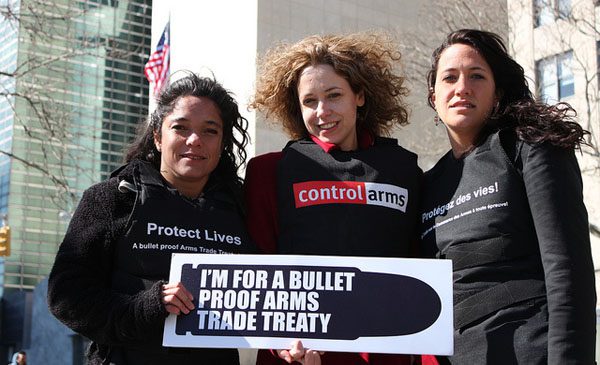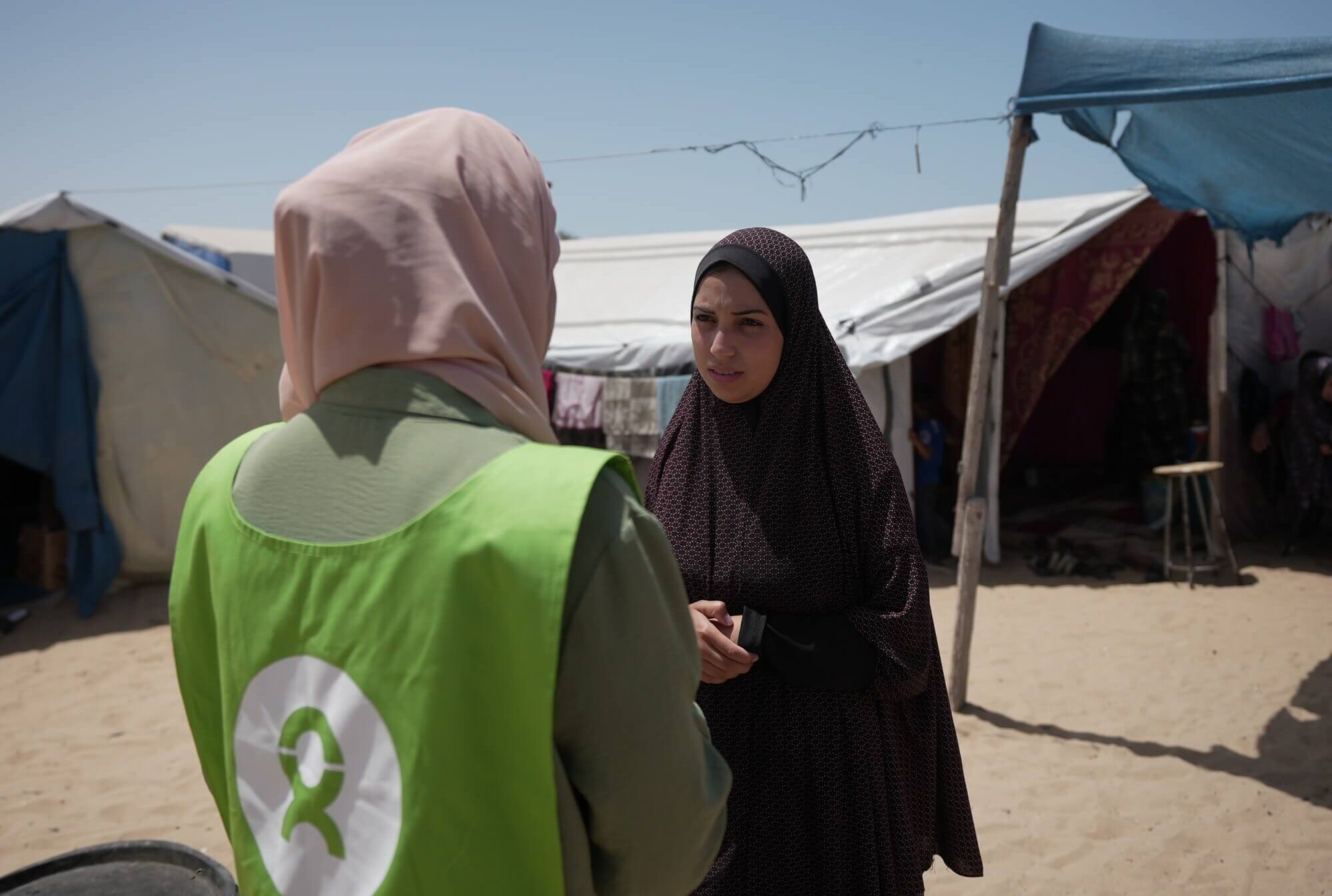It’s Friday afternoon at the United Nations in New York, and I’m sitting in a room with a few hundred delegates from around the world. We’ve just finished the second ‘Preparatory Committees’ – there’s one more to come before the final negotiating conference in 2012 that we hope will result in the first truly international, legally binding Arms Trade Treaty (ATT).
So what has changed during this week, and what has been achieved? Here’s my run-down of some of the week’s high and low:
It was a fascinating week, with governments from every part of the globe providing their views on what the final treaty should look like. It’s going to be a mammoth task for the Chair of the Negotiations, Roberto Moritan of Argentina, to pull together the range of comments and delicately balance the various views of states. Whilst the majority of States seem to be heading towards agreement on a comprehensive set of issues, the negotiations have been punctuated by a number of not-insignificant points of disagreement, particularly those voiced by a small, but vocal group of sceptics.
Moritan’s new papers
Most significantly, Ambassador Moritan has produced a series of new papers that set out a draft framework for the treaty as a whole, and draft language on the following sections of the treaty (Reaching Critical Will has the document)
- Principles
- Goals and objectives
- Scope (type of equipment and types of transfers covered)
- Criteria for assessing a transfer of arms
- International cooperation and assistance mechanisms, to assist states in fulfilling their obligations under the new treaty
What do we think?
The papers are generally strong, and contain many elements championed by the Control Arms Coalition as essential to an effective and robust ATT – see the official response and Q&A about the meeting at www.controlarms.org. In particular, the draft text includes specific criteria considering the human rights, international humanitarian law and sustainable development impacts when authorising a transfer of arms. Additionally, ammunition, which several states including the United States have opposed, is still in the scope. Whilst victim assistance seems under threat, a specific reference is still in the papers and several states, have made specific references to the importance of addressing the needs of victims through the UN system, national organisations, aid programs or through NGOs.
Of great concern to advocates are the questions around the viability of including transfers of technology, and arms manufacturing technology in the Treaty. Excluding this would provide a major loophole in the treaty due to ever-growing number of new producers of various types of arms and ammunition around the world. There is also a worrying absence of mentions of the need to include non-military weapons, munitions and armaments used by internal security forces, as evidenced in the latest brutal human rights crackdown in North Africa and the Middle East.
New countries, new issues
We saw the emergence of some interesting new issues and some new key players in the room. Bahrain, speaking on behalf of the Arab Group, for the first time acknowledged the importance of human rights and the fact that conventional weapons have been used for the killing of civilians and the destruction of homes in its region. However, they also expressed concern that if there is a strict human rights rule to govern decisions of arms transfers, it could be politicized. The world’s two most significant emerging powers, India and China, elaborated on their positions more than ever before. Worryingly, they are both calling for a narrow scope of the treaty. India raised some pertinent points around feasibility and implementation, and China expressed cautious support for the inclusion of human rights, as long as it will not be used politically and will only apply to the specific conventions each country has signed up to.
A win for development
There were also some real wins for those of us who want to see an ATT that will reduce the humanitarian and development impacts of the irresponsible arms trade, with strong language still included in Moritan’s paper. For the first time, we also heard a great strong interventions linking the ATT to the gendered impacts of conflict and armed violence. As an Australian, I felt proud that it was in fact my country leading the charge, with the Australian delegation calling for donors and recipient states to allocate assistance to address the impacts of armed conflict on women in accordance with UN Security Council Resolutions on women, peace and security. What’s more, this intervention was supported by a variety of countries including Trinidad and Tobago, the United Kingdom, Papua New Guinea on behalf of the Pacific Islands and Norway. This morning, Trinidad and Tobago reasserted the importance of this issue, stating that it would support any and all references to the gendered impacts of armed violence and conflict.
What’s next? We’ll Meet again.
The next and final PrepCom will begin on July 11th, 2011 and will focus on the issue of implementation – the framework for making sure that states can turn their treaty obligations into practice. What I’ve enjoyed most about this week is that it gives us a much clearer frame of reference in order to plan over the next critical 18 months until the final conference.
What’s most obvious is that a broader range of states than before are getting serious about the ATT, and all states have been thinking in far more detail about what they would, and would not, like to see in an ATT. Whilst not all of the positions put forward reflect what us advocates want to see in the final Treaty, the discussion does put us in a much better position to see where the gaps are, and where we need to provoke more detailed debate, contribute technical solutions and expertise, and build political will where it is currently most lacking.
The task ahead is massive, but the PrepCom this week has reassured me of where we, as advocates for a strong and enforceable ATT, need to go, what we need to do, and where we need to be – when we meet again…. in July.
- Read the global Control Arms campaign statement on the talks
- Check out their in-depth Q&A about progress on a global Arms Trade Treaty



